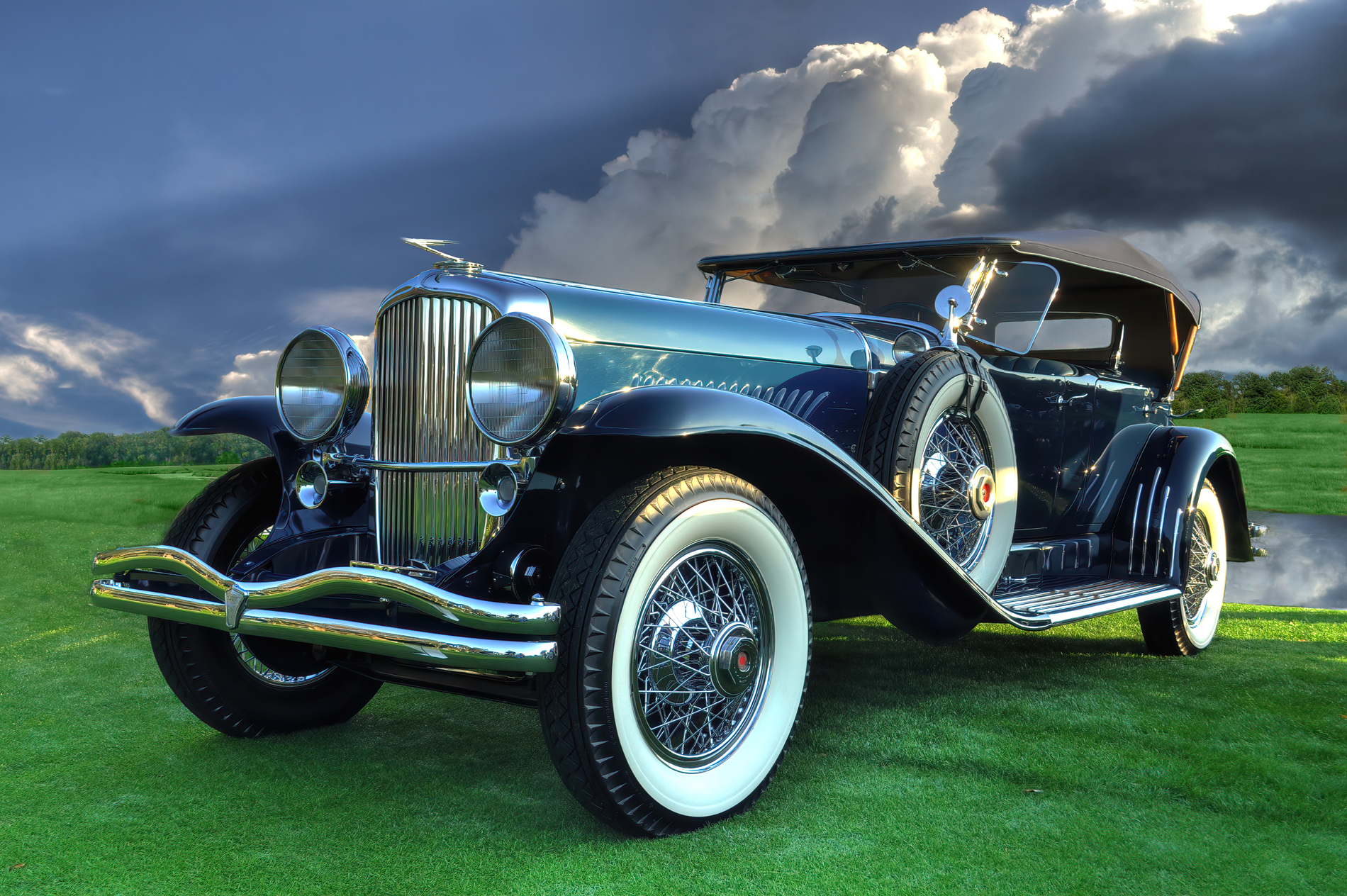
This 1929 Duesenberg J-111 Dual Cowl Phaeton 10th Model J built, and was originally displayed at the 1929 New York and Los Angeles Auto Shows before becoming a company demonstrator to the Hollywood elite. It was eventually purchased by James Talmadge, son of actors Buster Keaton and Natalie Talmadge.
Duesenberg's were the choice of not just the simply rich, but the ultra-wealthy. With custom coachwork by LeBaron, this automobile cost nearly $20,000 new, which in 1929, was the equivalent of purchasing two average middle-class homes and about two dozen Model A Fords.
In 1947, this car sold as used for only $123!
Background
- Manufacturer: Duesenberg, an American luxury automobile manufacturer known for producing some of the most opulent and advanced cars of the pre-World War II era.
- Year: 1929
- Model: Model J, one of the most renowned and prestigious models produced by Duesenberg.
Specifications
- Engine: The Model J is powered by a 420 cubic inch (6.9-liter) straight-eight engine, producing 265 horsepower. This was an extraordinary amount of power for the time, allowing the car to reach speeds of up to 119 mph (191 km/h).
- Chassis: The Model J chassis was known for its strength and rigidity, providing a stable platform for the custom coachwork.
- Transmission: It features a three-speed manual transmission.
Body Style
- Dual Cowl Phaeton: The "Dual Cowl" designation refers to the car's two separate windshields—one for the front passengers and one for the rear passengers. The "Phaeton" body style is a convertible with an open passenger compartment.
- Coachwork: The bodywork for the J-111 was crafted by LeBaron, a prominent coachbuilder known for creating custom and luxurious bodies for high-end automobiles. The design is characterized by its elegance and attention to detail.
Features
- Luxury and Craftsmanship: The J-111 Dual Cowl Phaeton is adorned with the finest materials, including rich leather upholstery, polished wood trim, and intricate instrumentation. The interior is designed to provide the utmost comfort and luxury.
- Distinctive Design: The car features a long, sweeping hood, a signature Duesenberg radiator grille, and chrome accents. The dual cowl design adds an element of sophistication and privacy for rear passengers.
Historical Significance
- Symbol of Wealth: The Duesenberg Model J was a symbol of affluence and status, favored by celebrities, industrialists, and royalty. Its high price and luxurious features made it one of the most desirable cars of its time.
- Engineering Excellence: The Model J was not only luxurious but also technologically advanced, with features such as hydraulic brakes and a highly efficient engine, setting new standards in the automotive industry.
Legacy
- Collectibility: Today, the 1929 Duesenberg J-111 Dual Cowl Phaeton is considered one of the most collectible and valuable classic cars. It is highly sought after by collectors and has achieved significant prices at auctions.
- Cultural Impact: The Duesenberg Model J remains an enduring symbol of the Roaring Twenties and the height of American automotive design and engineering. It continues to be celebrated for its beauty, performance, and craftsmanship.
You may purchase a print of the 1929 Duesenberg J-111 Dual Cowl Phaeton in our dElegance 2011 online gallery.

